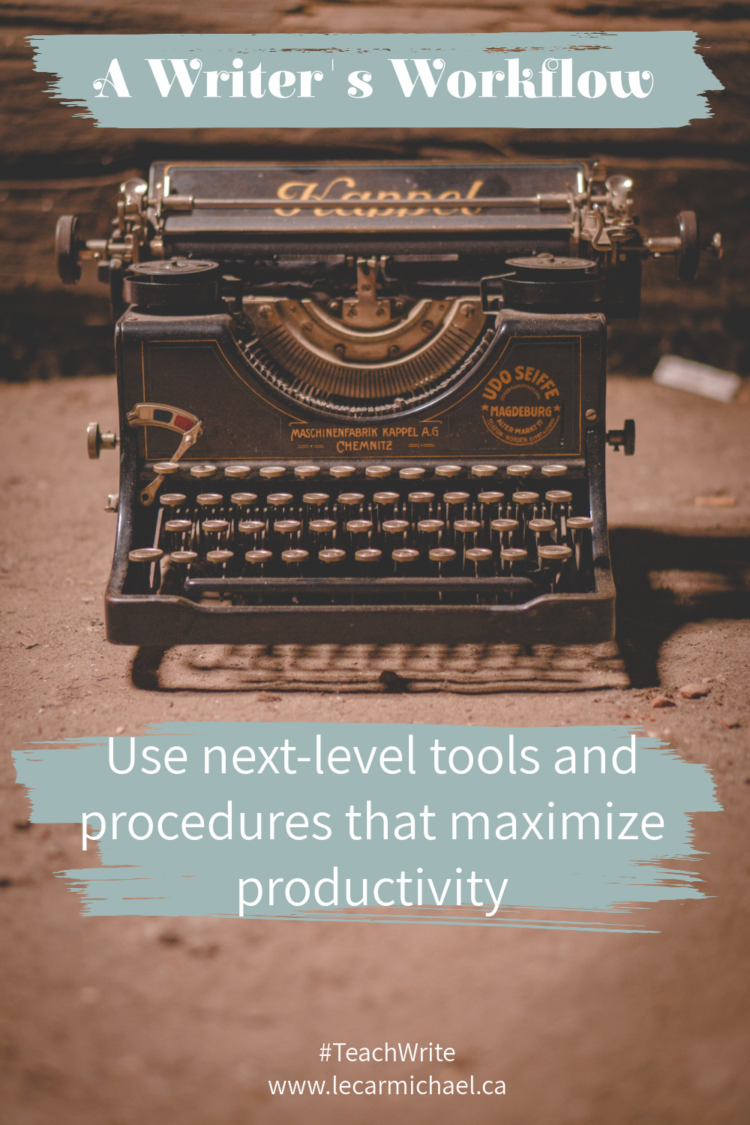 Welcome to Teach Write! This column draws on my 20 years’ experience teaching writing to kids, university students, and adult learners. It includes ideas and exercises that teachers and students can use in the classroom, and creative writers can use to level up their process.
Welcome to Teach Write! This column draws on my 20 years’ experience teaching writing to kids, university students, and adult learners. It includes ideas and exercises that teachers and students can use in the classroom, and creative writers can use to level up their process.
If you’ve been following the last three Teach Write columns on managing and organizing research, today is the day: the day we put it all together into a streamlined, efficient workflow.
Note that this the method I’ve arrived at over 20 years’ of trial and error. It’s what works best for me: it might not be what works best for you. Note as well that, as a professional writer-person, I am using next-level writer tools – Scrivener and Endnote – that might not be relevant for the writing you need to do. Note as well that you can swap out any reference manager for Endnote and get the same results.
A Writer’s Workflow
With those caveats in place, this is how I go from notes to final draft without losing track of any of my sources:
- Import or manually enter citation information into Endnote.
- Copy the Endnote field code.
- In Scrivener, create a file for that reference in my Research folder. Give it a unique name (typically Author/Year).
- Take notes into this file, pasting the Endnote field code at the end of every sentence or paragraph. Add page numbers to field codes as appropriate.
- Repeat for all the other references….
- Outline, draft, revise, revise, revise (more on those steps later)….
- Fact check the final draft. By fact check, I mean pull out ALL of my original sources and double check that the original text says what I think it does, and that every sentence of my draft is as accurate as it can possibly be.
- Format Endnote field codes as inline footnotes (see Scrivener help-files for how-to on this).
- Export my manuscript, including footnote codes, from Scrivener to Word.
- Using the Endnote plug-in within Word, convert Endnote field codes to properly formatted citations. Depending on what my editor wants, I might also strip the citations out of the text and simply generate a bibliography. Scrivener and Endnote make that option easy, too.
- Proof read and final format!
A Note on Fact Checking
If you’ve been following along for the last few Teach Write columns, your eyebrows might have lifted at #7. Why, you may be asking, if I’ve done such a great job of tracking my sources as I go, do I need to double check every sentence in the manuscript?
It’s because, no matter how hard I try or how careful I am, about 10% of my citations will be incorrect by the time I get to the final draft. There are several reasons for this:
- I misunderstood something the first time I read my original reference
- I made a typo in my notes – very common when dealing with numbers or statistics in STEM topics
- During drafting or editing, sentence structure changed and a fact got separated from a citation.
Doing this final check step reassures me that my research is sound and my words are accurate and that my work is the best it can possibly be… before any eagle-eyed readers get their hands on it!
I hope this series has been helpful. Stay tuned for future Teach Write columns as we delve into the final preparation step in writing: the dreaded outline.
Hey, did you know I teach writing workshops? It’s true – I work with adult writers, teachers, and students of all ages. Contact me to learn more.